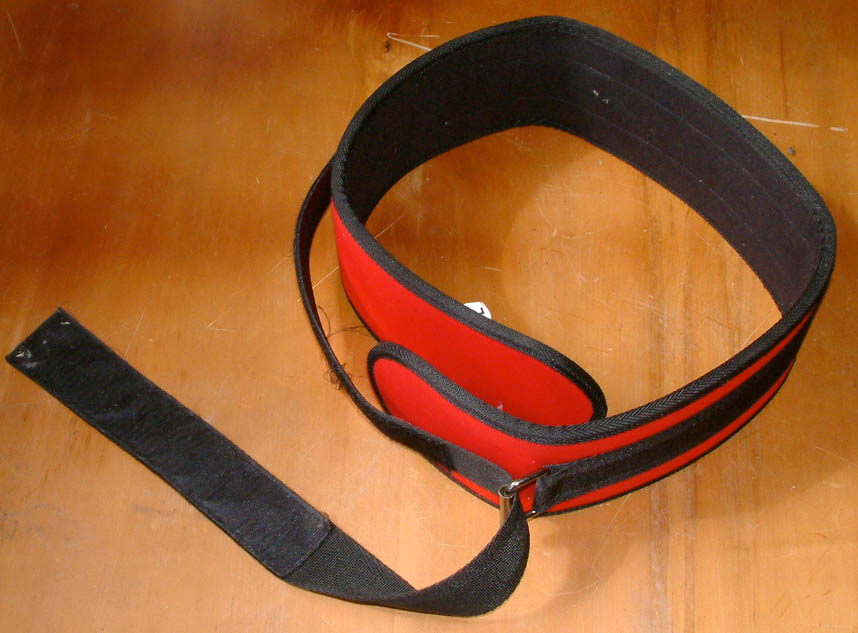Back Belt on:
[Wikipedia]
[Google]
[Amazon]
 Back belts, or
Back belts, or
Canadian Centre for Occupational Health & Safety. November 10, 2005. Accessed June 22, 2009. Back belts are popular among workers across a number of industries—airline baggage handlers,
National Institute for Occupational Safety and Health. DHHS (NIOSH) Publication No. 94-127. October 1996. Accessed June 22, 2009. The theory underlying the use of back belts is that the belts reduce forces on the spine, stiffen the spine, or increase intra-abdominal pressure. Research has yet to demonstrate the efficacy of back belts in preventing
lumbar
In tetrapod anatomy, lumbar is an adjective that means ''of or pertaining to the abdominal segment of the torso, between the diaphragm and the sacrum.''
The lumbar region is sometimes referred to as the lower spine, or as an area of the back i ...
support belts, are generally lightweight belts worn around the lower back to provide support to the lumbar. Industrial back belts tend to be similar to weight lifting belt
Weight training is a common type of strength training for developing the physical strength, strength, size of skeletal muscles and maintenance of strength.Keogh, Justin W, and Paul W Winwood. “Report for: The Epidemiology of Injuries Acros ...
s or special belts used in medical rehabilitation therapy."Back Belts"Canadian Centre for Occupational Health & Safety. November 10, 2005. Accessed June 22, 2009. Back belts are popular among workers across a number of industries—airline baggage handlers,
warehouse
A warehouse is a building for storing goods. Warehouses are used by manufacturers, importers, exporters, wholesalers, transport businesses, customs, etc. They are usually large plain buildings in industrial parks on the outskirts of cities, ...
workers, piano movers, grocery clerks, etc.—specifically to prevent lifting injuries."BACK BELTS: Do They Prevent Injury?"National Institute for Occupational Safety and Health. DHHS (NIOSH) Publication No. 94-127. October 1996. Accessed June 22, 2009. The theory underlying the use of back belts is that the belts reduce forces on the spine, stiffen the spine, or increase intra-abdominal pressure. Research has yet to demonstrate the efficacy of back belts in preventing
ergonomic
Human factors and ergonomics (commonly referred to as human factors) is the application of psychological and physiological principles to the engineering and design of products, processes, and systems. Four primary goals of human factors learnin ...
injuries, although some research has suggested that back belts may have some effect in stabilizing the spine when lifting objects. In some cases, workers expose themselves to greater risk of injury, believing that the back belt is providing extra support and protection.
See also
*Back brace
A back brace is a device designed to limit the motion of the spine in cases of bone fracture or in post-operative spinal fusiona, as well as a preventative measure against some progressive conditions or to correct patient posture.
Common back ...
* Passive exoskeleton
References
{{reflist Ergonomics